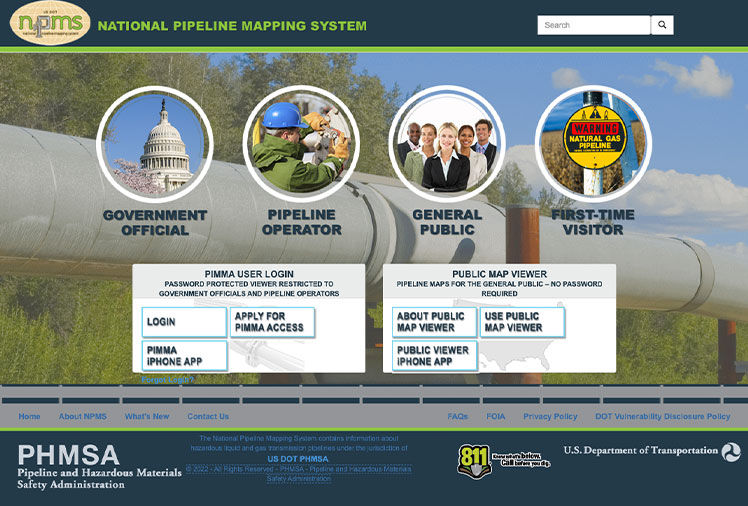| View in browser > |
 |
|
Welcome to National Grid’s Tips of the Trade for first responders. These tips are intended to help you respond safely and effectively to incidents involving natural gas and electricity. Please review them with your team.
|
|
| Understanding NPMS and PIMMA: Essential tools for first responders |
|
 |
| Underground natural gas transmission pipelines transport large volumes of natural gas at high pressures over long distances, delivering gas to towns and cities. Damage to these pipelines can cause dangerous leaks that have the potential to ignite or explode. As a first responder, it is vital that you know the location, size and contents of the large pipelines that may cross your jurisdiction. How do you learn about the pipelines in your area and what they contain? |
|
|
|
 |
 |
 |
| The National Pipeline Mapping System provides general locations |
| You can learn the general location of natural gas and hazardous liquid transmission pipelines that cross your jurisdiction from the National Pipeline Mapping System (NPMS) at https://www.npms.phmsa.dot.gov, which is administered by the National Pipeline and Hazardous Materials Safety Administration (PHMSA). |
| NPMS is a web-based mapping application featuring data related to hazardous liquid and natural gas transmission pipelines, liquefied natural gas plants and breakout tanks (a type of storage tank). NPMS does not include distribution lines or gathering pipelines that transport gas from wells to processing plants. |
| Even a quick glance at the Public Map Viewer portion of the NPMS website (open to anyone) reveals that natural gas transmission pipelines traverse nearly every county in the country. The scale at which pipelines are visible on the public maps is restricted. Pipelines shown on the public maps disappear as you zoom in past a certain point as a security precaution. |
| Use the Pipeline Information Management Mapping Application for the greatest detail |
| For more detailed maps or to request GIS data layers to use in your own mapping system, federal, tribal, state and local officials (including all first responders) can apply for access to the Pipeline Information Management Mapping Application (PIMMA), also at https://www.npms.phmsa.dot.gov. PIMMA can serve as an essential tool in preparedness planning for catastrophic natural gas and hazardous liquids pipeline emergencies. It shows the same information that is available on the Public Map Viewer; however, the scale is not restricted, so first responders can identify the exact location of pipelines in their communities. |
| Access to PIMMA is restricted, and the applicant’s relationship to an authorized organization is investigated. For the sake of pipeline security, PHMSA requires applicants to agree not to share their account information or redistribute the information they derive from PIMMA maps. Multiple users from your department may apply for access. |
| For more first responder safety information, visit firstresponder.ngridsafety.com. |
|
|
|
| |
| |
|
| To report emergencies, call 911 and National Grid immediately. Always call 911 if you suspect a gas leak! |
| |
 |
| In case of gas emergencies: |
 |
Long Island and the Rockaways:
911 and 1‑800‑490‑0045 |
 |
Metro New York:
911 and 1‑718‑643‑4050 |
 |
Upstate New York:
911 and 1‑800‑892‑2345 |
 |
Massachusetts:
911 and 1‑800‑233‑5325 |
|
|
|
|
| |
|
|
|
| |
| |
|
 |
#14848 © 2024 Culver Media, LLC |
|
| |
|
|
|
 |
|
|